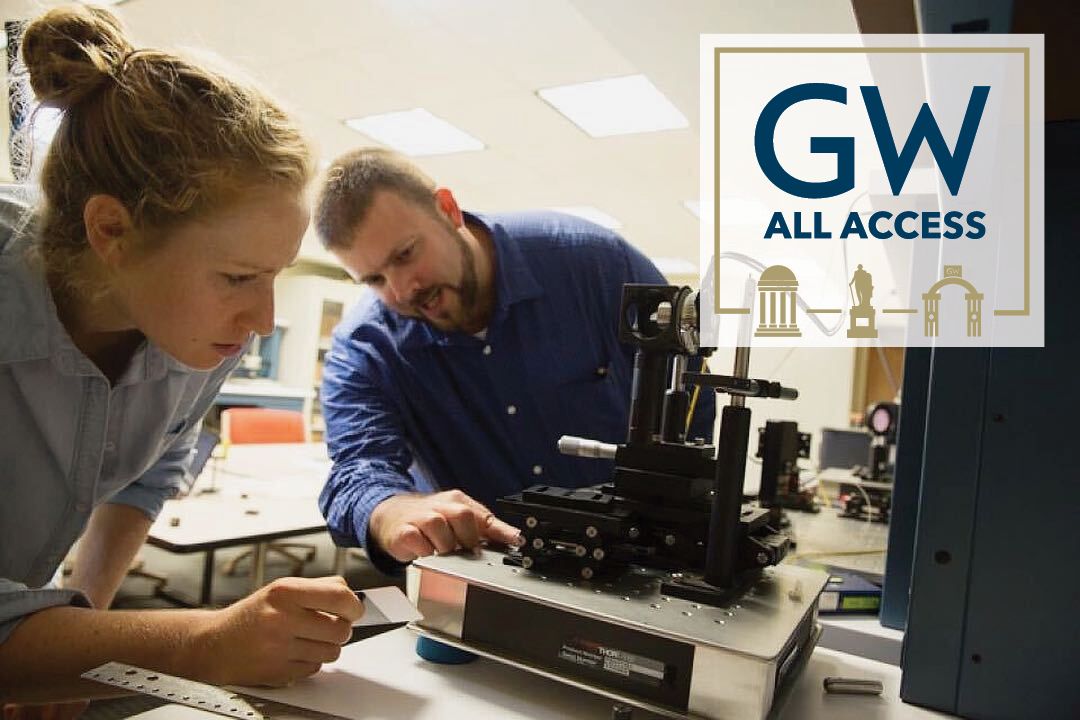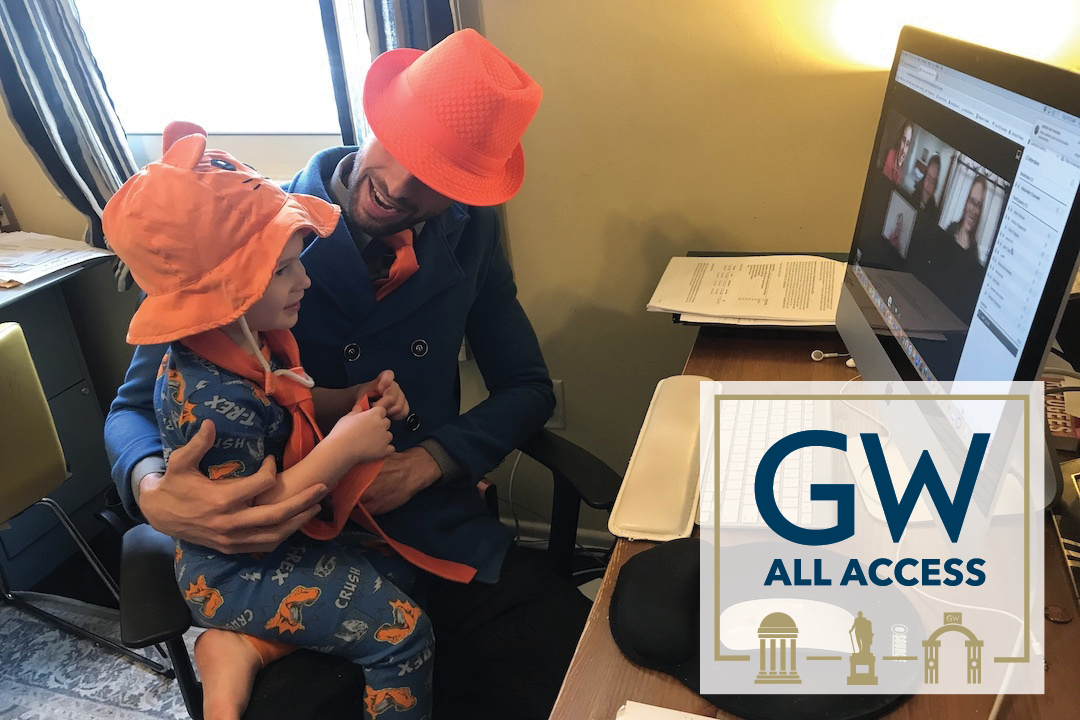A new series from GW Today shows how GW is preparing for the fall semester and a high-quality academic experience.
By Ruth Steinhardt
Every year, Jason Zara’s biomedical engineering students break down a process most people can do, but few people have consciously learned: They develop instructions on exactly how to walk. Then they pass those directives on to another student to follow, verbatim. The results are rarely dignified.
“You can see all the students try to figure out how they walk, and the funny thing is that very few of them just walk,” said Dr. Zara, professor of biomedical engineering and associate chair for academic affairs in the George Washington University School of Engineering and Applied Science. “What they do is stand up and mimic the actions they think they do when they walk. So they raise their knee to 90 degrees, stick their leg out and fall down onto their foot. Almost everyone misses that the big toe is the major muscle in walking.”
Though the exercise is a good example of how biomedical engineers often have to mimic human behaviors, Dr. Zara says it is useful less for its specifics—or its entertainment value—than for the way it illustrates the way detailed, accurate instructions are necessary to good engineering.
And, Dr. Zara points out, it’s one of the many aspects of his hands-on class that can translate easily to distance learning.
To the layman, a hands-on engineering class might seem difficult to move online. But with the exception of a few projects like simple circuit building, for which instructors can send a physical kit to students’ homes, Dr. Zara believes most can be replicated seamlessly.
“In the profession itself, a lot of hands-on engineering is actually software-based anyway,” he said.
In fact, Dr. Zara said his students were moving toward a virtual, collaborative learning model well before the COVID-19 pandemic made it necessary to take most classes online this fall.
“When you put students in a study group now, they just open their laptops and start a Google document and start typing,” he said. “That interaction has already moved online, so that won’t change.”
That’s relevant to the professional environments students will eventually enter. In multinational engineering corporations, for example, each team takes charge of an extremely specific part of a task, then passes what they’ve done along to the next discrete team—often without ever physically meeting. That’s different from the atmosphere of a traditional classroom, where two teams could get together and realize that one part doesn’t fit into the next before too much effort is wasted.
Though it may be a challenge to move group projects online in a way that ensures equitable engagement, Dr. Zara said it could increase individual accountability. That will also make it harder for single overachievers to take on too much of a team’s responsibility.
“Engineering design is about doing the appropriate steps in the right order,” Dr. Zara said. “I think moving it online will allow us to be more rigid about that process—we can say ‘OK, we need each student to submit this checkpoint before we move on to the next.’”
Dr. Zara said some physical activities will have to remain on the agenda. Besides the home building kits, one model might involve having a teaching assistant or undergraduate learning assistant perform the hands-on activities, guided by students watching synchronously over a video call. As in the how-to-walk exercise, the builder would perform as a kind of “robot,” forcing learners to refine their instructions. (Some assignments could even involve remotely directing a literal robot.)
More difficult will be establishing the trust and sense of community that make a functional class, Dr. Zara said. Besides holding virtual office hours, he plans to invite small groups of students to informal, rotating check-ins. He hopes it will encourage them to get to know each other and to keep an eye on learners and advisees who might be struggling. He hopes it will also make him more accessible to students who might otherwise be too busy, diffident or otherwise hesitant to show up at his physical office.
“Our current model involves a lot of student self-advocacy,” he said. “This way, we’re reaching out and proactively trying to provide the tools that individual students need.”
Despite the difficulties, Dr. Zara said the move to online learning provides an opportunity to make his classes more efficient and more accessible. As a highly verbal instructor, for instance, he hopes creating asynchronous failsafes and written backups for his lectures will make learning easier for students who aren’t auditory learners.
And he believes the challenges of online learning could help teach his students one of the most vital engineering lessons: the ability to be “comfortable being uncomfortable.”
“When they walk into an unfamiliar situation, even if they don’t know exactly what’s going on, we want them to know they have the methodology to figure out what the problem is and how to solve it,” Dr. Zara said.
“The good news is that this transition absolutely requires everyone to think very carefully and critically about what they’re doing—to go back and revisit their course learning objectives and ask, ‘What am I really trying to teach here?’” he said. “So I think in a lot of ways this could make both the broader engineering community and the GW community more connected.”




